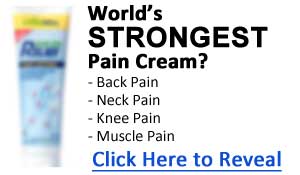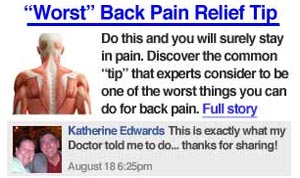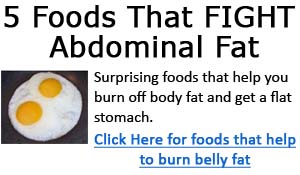The
(Partial) Vindication Of Soy Protein
By Will Brink, author of:
Bodybuilding Revealed
Muscle Gaining Diet, Training Routines by Charles Poliquin
& Bodybuilding Supplement Review
Readers note: this is one of my
favorite articles, and in my opinion, one of my best.
However, this article was turned down by several magazines.
At first I could not figure out why. I have been writing
articles for many magazines for years (see bio) and
I know a good article when I see one..if I say so
myself. Then it hit me. The article goes against what
the mags think people want to hear about their protein
products. Soy has been bashed for so long, and the
market for other proteins like whey has becomes so
big, that they didn't want any article showing soy
in a positive light.
Once an industry or an individual
has set a position on something, they would rather
ignore new evidence to the contrary then change their
position. As for me, if I find new information on
something that alters my position, that's fine by
me. I just change it to reflect the new information,
which is exactly what I had to do with my view on
soy proteins. The article did finally get published
in MuscleMag International. MMI might have its faults,
but they are one of the most open minded and flexible
magazines and didn't have any problems with publishing
this article with them. Hope you all find it useful.
Soy Protein (1)
Not more than a month ago, I was standing in a field
of soy beans in Peoria Illinois doing a commercial
for a Japanese film crew. The guy to the right of
the camera was holding up my little cue card as I
said "Soy products have been shown to reduce
cholesterol and possibly prevent cancer, yada, yada,
yada..." I found it hard to keep a straight face
and say nice things about soy protein as I have always
considered soy protein basically a waste of time for
bodybuilders. However, this commercial was for "normal"
people so I did not feel like a "sell-out"
for saying positive things about soy protein. On the
plane ride home, with a glass of red wine firmly in
hand, I decided to take a closer look into the properties
of soy proteins and see if there were not some useful
applications of this protein for bodybuilders after
all.
The bodybuilding community has been pretty hard on
soy protein generally relegating it to "crap"
status among most bodybuilders and bodybuilding nutritionists.
I will be the first to admit I have helped the negative
reputation of soy among bodybuilders along by telling
them how inferior it is to such proteins as whey or
egg in various articles and my book. I still think
soy protein is inferior to such proteins as whey and
egg, but I do believe that it has some potentially
useful applications if used correctly and tweaked
just right. More on that later.
The Downside of Soy Protein
So why does soy have such a bad reputation among
bodybuilders? On the surface, it would appear that
soy protein is pretty lousy stuff for most athletes.
Soy protein has a low BV score of 74. What does that
mean? There are several ways of assessing protein
quality. You have the protein efficiency ratio (PER),
the net protein utilization (NPU) and the biological
value (BV).
The PER is an outdated measure of protein quality
and is not used much anymore by most supplement manufacturers
or nutritionists "in the know" about protein
quality. The NPU is a little better than the PER,
but fails to take several important factors into account
involved with proteins, such as absorption and digestibility,
so it too is not used much either. That brings us
to the BV. The BV is the most accurate indicator of
biological activity of a protein and measures the
actual amount of protein deposited per gram of protein
absorbed.
As a rule, high BV proteins are better for nitrogen
retention, immunity, IGF-1 stimulation, and are superior
for reducing lean tissue loss during various wasting
states than their low BV counterparts. That is, as
a general rule, high BV proteins are more anti-catabolic
than low BV proteins. As most people already know,
the highest BV protein available is whey protein with
whole egg a close second (see chart), which is why
bodybuilders and other athletes rely heavily on these
two protein foods and tend to avoid soy and other
proteins with low BV scores.
In addition to its low BV score, soy has several
other nutritional drawbacks that make bodybuilders
avoid the stuff like it was fake D-bol. One reason
soy is so low on the BV scale is it is lacking in
the sulfur containing amino acid methionine. The sulfur
containing amino acids (cysteine being the other one)
are particularly important for protein synthesis/growth,
proper immune system function, and the body's production
of glutathione (GSH). GSH is one of the most important
anti-oxidants found in the body and protects cells
and serves to detoxify a variety of harmful compounds
such as hydrogen peroxide, carcinogens, reactive oxygen
species, and many others.
In particular, GSH is also partly responsible for
keeping low density lipoproteins (LDL) from oxidizing
and clogging our arteries. Several studies have shown
soy protein to be inferior to whey for the production
of GSH and improvements in immunity. Though soy has
a reputation for reducing cholesterol in man and animals,
in one study rats fed soy protein that was not fortified
with methionine as 13% of total calories, had an increase
in cholesterol and an increase susceptibility of LDL
cholesterol to peroxidation .
So not only did the rats cholesterol go up, the LDL
fraction oxidized easier potentially leading to clogged
arteries. It is well established that an increased
susceptibility of LDL to peroxidation is an essential
step for the development of atherogenesis. These rats
were found to have low levels of GSH and did not grow
as well as another groups of rats fed casein.
If that were not bad enough to convince you to avoid
soy, it gets worse. Soy protein contains something
known as "anti -nutrients" that block the
digestion and absorption of many nutrients. Two of
the more important anti-nutrients found in soy are
Lectins and protease inhibitors. Lectins are nasty
constituents of various plants and can cause all sorts
of problems from interfering with the absorption of
important nutrients to intestinal damage. Proteases
are enzymes that assist in the digestion of proteins.
Soy has several protease inhibitors that interfere
with the enzyme trypsin and chymotrypsin, both of
which are important for the digestion and absorption
of proteins in the gastrointestinal tract. Finally,
soy is rich in estrogenic compounds such as genistein
and diadzein. There are over 300 plant derived phytoestrogens
found that vary substantially in their physiologic
effect and potency in animals and man. As any bodybuilder
worth his weight belt already knows, a change in the
testosterone/estrogen ratio in favor of estrogen can
lead to increased bodyfat and other ill effects as
it relates to the strength athletes goals.
BV of common proteins
Whey=104
Whole egg=100
Egg white=88
Casein=77
Soy=74
Continue
to Part 2 >>
>> Click here for Will Brink's Bodybuilding Revealed
>> Click here for Will's Fat Loss Revealed
>> Click here for Optimum Nutrition Soy Protein
>> Click here for Soy Protein products



